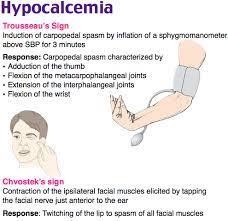The nurse is reviewing the record of a female client with Crohn's disease. Which stool characteristics should the nurse expect to note documented in the client's record?
Stools constantly oozing from the rectum
Chronic constipation
Diarrhea
Constipation alternating with diarrhea
The Correct Answer is C
Choice A rationale: Not a typical characteristic of Crohn's disease; more associated with conditions like rectal fistulas.
Choice B rationale: Crohn's disease commonly involves diarrhea rather than chronic constipation.
Choice C rationale: A common symptom of Crohn's disease due to inflammation and malabsorption in the intestines.
Choice D rationale: Crohn's disease typically presents with diarrhea but not necessarily alternating with constipation. Constipation alternating with diarrhea may also occur in irritable bowel syndrome.
Nursing Test Bank
Naxlex Comprehensive Predictor Exams
Related Questions
Correct Answer is B
Explanation
Choice A rationale: Intubation and mechanical ventilation may be needed if the respiratory muscles are affected by GBS, but this is not a routine intervention at this stage.
Choice B rationale: One of the main treatments of GBS is IV immunoglobulin therapy (IVIG), which involves infusing antibodies from donated blood plasma to block the harmful immune response that damages the nerves. Sandoglobulin is one of the brand names of IVIG used for GBS. IVIG can help shorten the duration and severity of the disease, and improve the recovery rate.
Choice C rationale: Methylprednisolone is a corticosteroid that can reduce inflammation, but it is not recommended for GBS, as it may worsen the condition or increase the risk of infection.
Choice D rationale: NG feeding tube may be required if the patient has difficulty swallowing, but this is also not a standard intervention at this time.
Correct Answer is C
Explanation
Choice A rationale: Chvostek and Trousseau signs are not typically associated with hypothyroidism.
Choice B rationale: These signs are not commonly related to pineal tumors.
Choice C rationale: Chvostek and Trousseau signs, indicating neuromuscular irritability due to hypocalcemia, are often seen in hypoparathyroidism.
Choice D rationale: Chvostek and Trousseau signs are not characteristic findings in pheochromocytoma.

Whether you are a student looking to ace your exams or a practicing nurse seeking to enhance your expertise , our nursing education contents will empower you with the confidence and competence to make a difference in the lives of patients and become a respected leader in the healthcare field.
Visit Naxlex, invest in your future and unlock endless possibilities with our unparalleled nursing education contents today
Report Wrong Answer on the Current Question
Do you disagree with the answer? If yes, what is your expected answer? Explain.
Kindly be descriptive with the issue you are facing.
